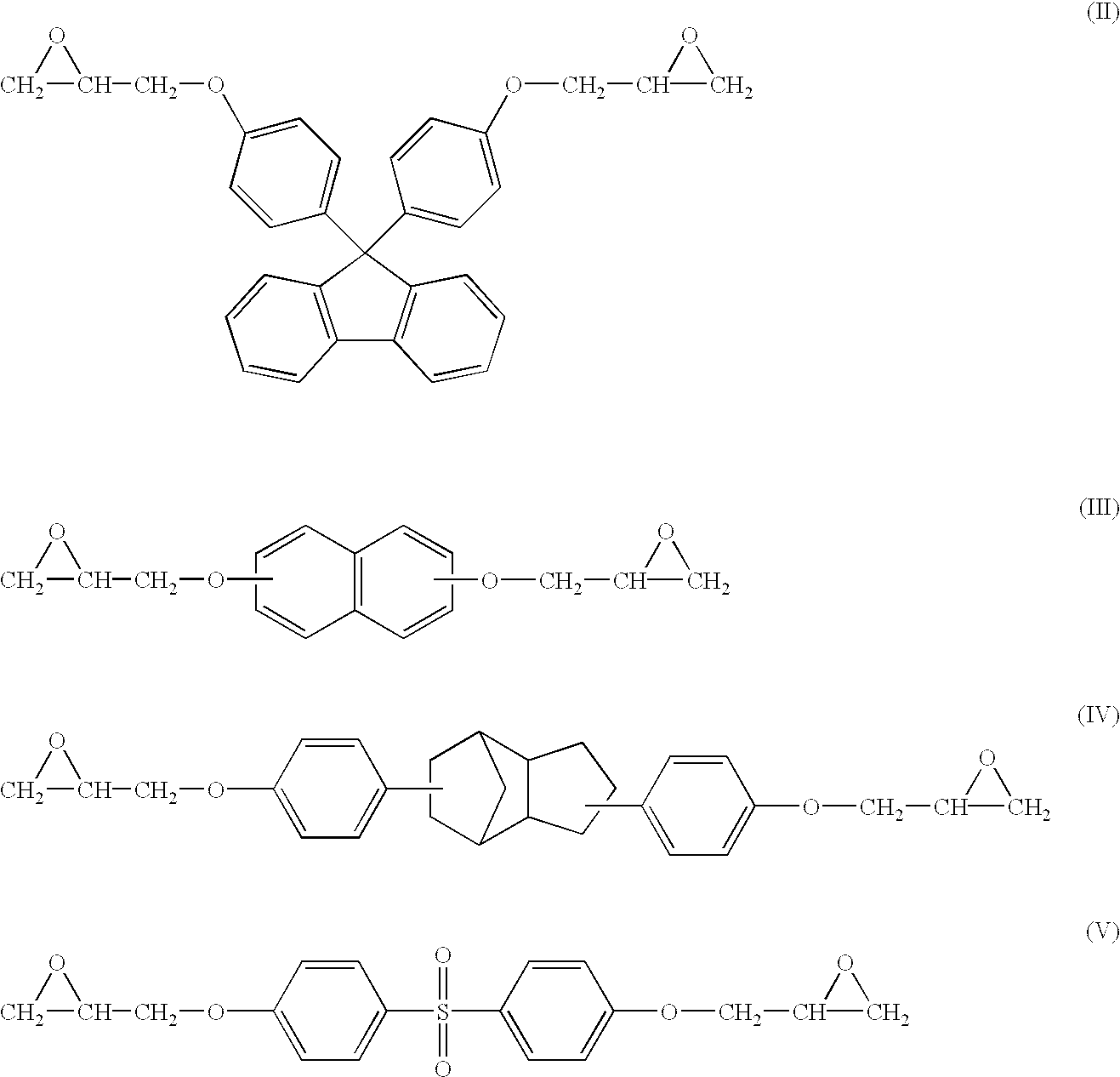Epoxy resin composition for fibre-reinforced composite material
a technology of epoxy resin and composite material, which is applied in the direction of synthetic resin layered products, transportation and packaging, chemistry apparatus and processes, etc., can solve the problems of resin impregnation faults, excessive viscosity of resin with enhanced toughness, and inability to achieve high-temperature emulsion and emulsion,
- Summary
- Abstract
- Description
- Claims
- Application Information
AI Technical Summary
Benefits of technology
Problems solved by technology
Method used
Image
Examples
example 1
[0103] A resin composition of composition as shown in Table 1 was produced. In Table 1, the mixing ratios of the starting materials are expressed by weight. Here, liquid B was prepared by mixing the two types of starting material at room temperature 25.degree. C., then raising the temperature to 70.degree. C., after which stirring was carried out for 30 minutes to produce a uniform solution, which was allowed to cool to room temperature. Even after cooling, liquid B remained in a uniform solution state. The resin composition obtained by mixing together liquid A and liquid B at room temperature had a low viscosity and when cured under the aforesaid conditions there was obtained a cured material with a high elastic modulus.
examples 2 and 3
[0107] Resin compositions of composition as shown in Table 1 were produced. Here, liquid A was prepared by mixing together the two starting materials at room temperature 25.degree. C. and then further stirring. On the other hand, liquid B was prepared by mixing together the two starting materials at room temperature, then heating to 70.degree. C., after which stirring was carried out for 30 minutes to produce a uniform solution and this was left to cool to room temperature. Even after leaving liquid B to cool, it still remained in a uniform solution state. The resin composition obtained after mixing liquid A and liquid B together at room temperature was of low viscosity and, when curing was carried out under the aforesaid conditions, a cured material of high heat resistance was obtained compared to use of just an alicyclic epoxy resin as the epoxy resin.
example 4
[0108] A resin composition of composition as shown in Table 1 was produced. Here, liquid A was prepared by mixing together the two starting materials at room temperature 25.degree. C., and then further stirring. On the other hand, liquid B was prepared by mixing together the two starting materials at room temperature, then heating to 70.degree. C., after which stirring was carried out for 30 minutes to produce a uniform solution and this was left to cool to room temperature. Even after leaving liquid B to cool, it still remained in a uniform solution state. The resin composition obtained by mixing liquid A and liquid B at room temperature was of low viscosity, and when cured under the aforesaid conditions there was obtained a cured material of high elastic modulus.
PUM
| Property | Measurement | Unit |
|---|---|---|
| temperature | aaaaa | aaaaa |
| glass transition temperature | aaaaa | aaaaa |
| flexural modulus | aaaaa | aaaaa |
Abstract
Description
Claims
Application Information
 Login to View More
Login to View More - R&D
- Intellectual Property
- Life Sciences
- Materials
- Tech Scout
- Unparalleled Data Quality
- Higher Quality Content
- 60% Fewer Hallucinations
Browse by: Latest US Patents, China's latest patents, Technical Efficacy Thesaurus, Application Domain, Technology Topic, Popular Technical Reports.
© 2025 PatSnap. All rights reserved.Legal|Privacy policy|Modern Slavery Act Transparency Statement|Sitemap|About US| Contact US: help@patsnap.com



